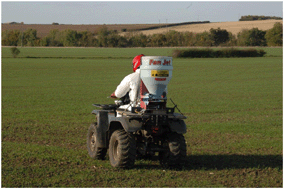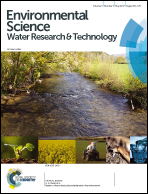Review of the molluscicide metaldehyde in the environment
Abstract
Metaldehyde is the active ingredient in most slug pellets used to protect crops. This molluscicide is considered an emerging pollutant and is frequently detected in surface water bodies above the EU statutory drinking water limit of 0.1 μg L−1 for a pesticide. This presents a challenge for providers of drinking water. Understanding the sources, transport and environmental fate of this compound is therefore important. This critical review discusses these aspects including monitoring and analytical techniques used for the detection of metaldehyde in environmental matrices. Novel techniques used for the removal of metaldehyde from drinking water are presented together with potential catchment management strategies and initiatives useful for the mitigation of this molluscicide in the environment.

- This article is part of the themed collection: Environmental Science: Water Research & Technology 2017 Most Downloaded Articles


 Please wait while we load your content...
Please wait while we load your content...